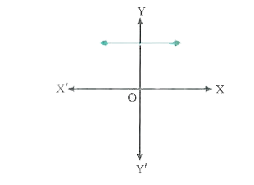Check whether the first polynomial is a factor of the second polynomial by dividing the second polynomial by the first polynomial :
x2+3x+1,3x4+5x3−7x2+2x+2Solution in Gujrati
The correct Answer is:0,x2+3x+1
Step by step video, text & image solution for Check whether the first polynomial is a factor of the second polynomial by dividing the second polynomial by the first polynomial : x^(2)+3x+1, 3x^(4)+5x^(3)-7x^(2)+2x+2 by Maths experts to help you in doubts & scoring excellent marks in Class 10 exams.
Topper's Solved these Questions
- BOOK - KUMAR PRAKASHANCHAPTER - POLYNOMIALSEXERCISE - EXERCISE 2.46videos
POLYNOMIALS
- BOOK - KUMAR PRAKASHANCHAPTER - POLYNOMIALSEXERCISE - TEST YOUR SKILLS33videos
POLYNOMIALS
- BOOK - KUMAR PRAKASHANCHAPTER - POLYNOMIALSEXERCISE - EXERCISE 2.212videos
POLYNOMIALS
- BOOK - KUMAR PRAKASHANCHAPTER - PAIR OF LINEAR EQUATIONS IN TWO VARIABLES EXERCISE - Test Your Skills48videos
PAIR OF LINEAR EQUATIONS IN TWO VARIABLES
- BOOK - KUMAR PRAKASHANCHAPTER - PROBABILITY EXERCISE - OBJECTIVE QUESTIONS (State whether each of the following statements is true or false:)5videos
PROBABILITY
Similar Questions
Verify that the numbers given alongside of the cubic polynomials below are their zeroes. Also verify the relationship between the zeroes and the coefficients in each case :
2x3+x2−5x+2,12,1,−201:48View SolutionThe graphs of y=p(x) are given in the figures below, for some polynomials p(x) find the number of zeroes of p(x) :
 03:08View Solution
03:08View SolutionFind the zeroes of the following quadratic polynomials and verify the relationship between the zeroes and the coefficients :
x2−2x−802:50View SolutionIf the numerator of a fraction is decreased by 1. It reduces to 12 and if its numerator is increased by 1. it reduces to 1. Represent this situation algebraically and graphically.
10:37View SolutionFor any event A, P (A) is always greater than P(¯¯¯A).
06:02View SolutionCheck whether the first polynomial is a factor of the second polynomial by dividing the second polynomial by the first polynomial
x2+3x+1,3x4+5x3−7x2+2x+204:28View SolutionCheck in which case the first polynomial is a factor of the second polynomial by dividing the second polynomial by the first polynomial :
(ii) x2+3x+1,3x4+5x3−7x2+2x+2.03:21View SolutionCheck whether the first polynomial is a factor of the second polynomial by dividing :
x2+3x+1,3x4+5x3−7x2+2x+204:56View Solution(i) Check whether the first polynomial is a factor of the second polynomial by dividing the second polynomial by the first polynomial:
t2−3,2t4+3t3−2t2−9t−12
(ii) Check whether the first polynomial is a factor of the second polynomial by dividing the second polynomial by the first polynomial
x2+3x+1,3x4+5x3−7x2+2x+2
(iii) Check whether the first polynomial is a factor of the second polynomial by dividing the second polynomial by the first polynomial:
x3−3x+1,x5−4x3+x2+3x+102:05View SolutionDivide the second polynomial by the first polynomial and check whether the first polynomial is a factor of the second polynomial. x^2+3x+1,3x^4+5x^3-7x^2+2x+2
03:27View SolutionDivide the second polynomial by the first polynomial and check whether the first polynomial is a factor of the second polynomial. x^3-3x+1,x^5-4x^3+x^2+3x+1
03:11View Solutionకింది బహుపదులలో రెండవ బహుపదిని , మొదటి బహుపదిచే భాగించి ప్రతి సందర్భంలో మొదటి బాహుపది కారణాంకం అగునో, కాదో సరిచూడండి. x2+3x+1,3x4+5x3−7x2+2x+2
View SolutionCheck in which case the first polynomial is a factor of the second polynomial by dividing the second polynomial by the first polynomial :
x2+3x+1,3x4+5x3−7x2+2x+203:36View SolutionCheck in which case the first polynomial is a factor of the second polynomial by dividing the second polynomial by the first polynomial :
x2+3x+1,3x4+5x3−7x2+2x+203:34View SolutionCheck whether the first polynomial is a factor of the second polynomial by dividing the second polynomial by the first polynomial :
x2+3x+1,3x4+5x3−7x2+2x+203:16View Solution

